One giant scar runs through the otherwise pristine Arizona Highways landscape that spreads in all directions around desolate Arizona Highway 177. In between the towering rock walls, desert mountains, and tree-filled river beds, the Ray Mine sits like its own kind of toxic canyon carved into the landscape. Run by ASARCO, a corporation known for unfair labor practices, a long history of often violent labor disputes and blatant disregard for the environment, the Ray Mine dominates the economic and environmental geography of Route 177.
In this corner of the state mining touches everyone, from supplying jobs and shaping community to destroying the environmental health of the whole region. Meanwhile ASARCO fights bankruptcy and attempts to maintain competitiveness in a changing global economy. Outwardly, what we see is a man-made landscape that has been ripped into the pristine high desert and outdoes the Great Pyramid of Giza in all measure of scale other than classic beauty, but within the Ray Mine lies a monumental apocalyptic beauty that transcends human reality.

The Ray Mine is located in central Arizona between Winkelman and Superior along scenic Hwy 177. It is surrounded by low broken granite hills. The tailings from the mine are visible for miles around, long before you can see the large open pit and the full magnitude of how much earth has been displaced to reach the copper rich ore deep beneath the surface. Open pit mining began in 1948 at this location, and the Ray mine is the third largest copper producing mine in the United States. Along with the smelting facility in nearby Hayden, the Ray mine has been identified by the EPA as the largest single-source toxic waste producer in the state of Arizona; as a result of this, residents of Hayden have a 50% higher incidence of lung cancer than residents of the state’s major metropolitan areas in Phoenix and Tucson.
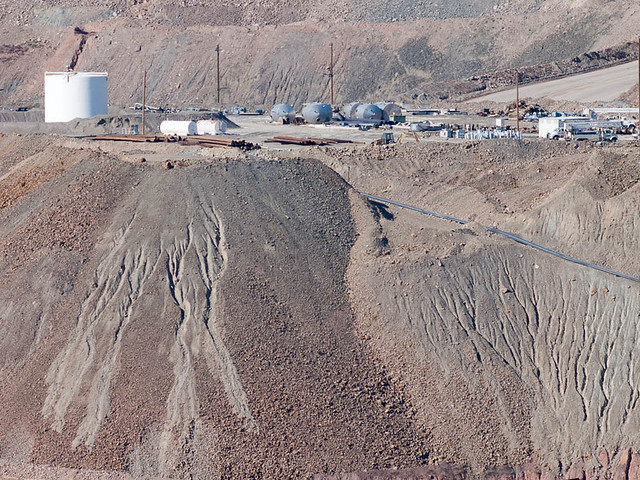
When you look into the abyss of the Ray Mine, it is hard to imagine where in this massive void the two vanished towns of Ray and Sonora were located before being subsumed by the mine. The mine simply grew and swallowed up everything around it, including entire towns. The residents of those towns were forcibly moved to the new company-built town of Kearney. You have to wonder what it felt like for the workers who dug the earth from beneath their home towns and watched as they then fell into the gaping open pit of the mine. Did they watch their own houses and the streets where they played as children tumble into nothingness and feel a sense of loss, or were they just happy to have a job and be able to feed their families? Did they feel that their lives had been undercut and that they were being swallowed up by the mining company that employed them?
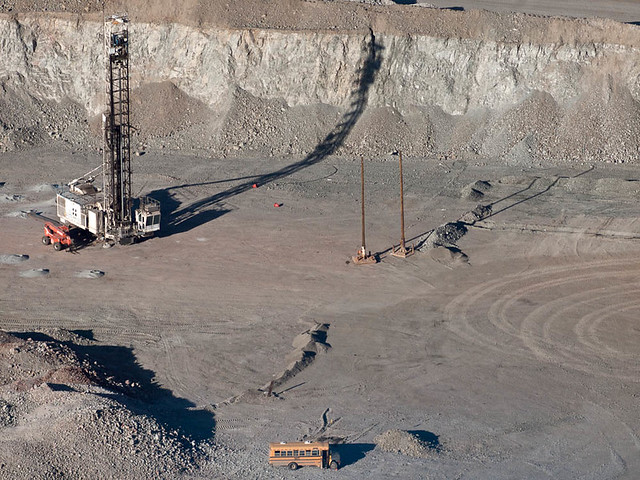
The best overall view of the Ray mine is found at a public viewing area maintained by ASARCO. To get there you have to drive several miles along a winding, toxic dirt road. When you get to the observation point, you find mothers showing children where their fathers go to work each day and boyfriends proudly explaining to their girlfriends what they do in the mines. When viewing the mine in person, it is impossible not to be awestruck by the scale of destruction. Giant mining trucks capable of carrying more than 400 tons of earth slowly work their way up and down the graded vehicle tracks along the edges of the mine. One guy next to me pointed out to his girlfriend how the traffic was controlled on the tracks. He also commented that in most mines twelve foot light-whips were required, but in the Ray mine they use sixteen foot ones.
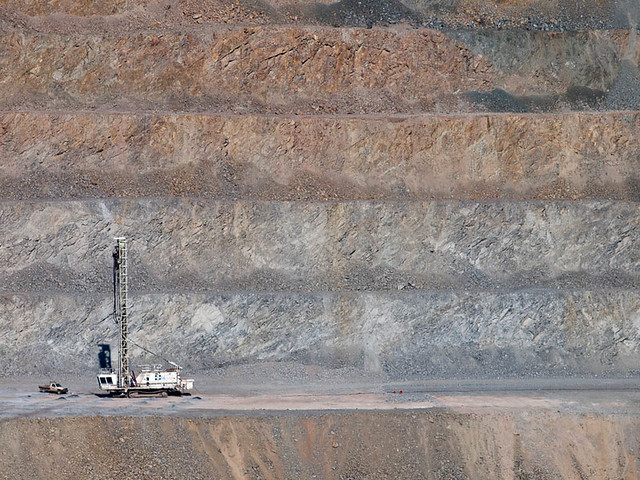
A light-whip is a fiberglass pole attached to a mining vehicle with lights and a flag on top. The primary purpose is to increase visibility while operating inside the mine, but it has a secondary function when a vehicle is covered by a rock slide or other cave-in. Then it serves as a marker to help rescue workers locate and dig out the trapped miners below. In real life, when the world comes crashing down on you, it would be nice to feel that you had a personal light-whip, a marker to let people know you need help. But when you really need them, it seems there is never anyone around and you have to dig yourself out alone, brush yourself off and simply move on. Certainly, there are times when a sixteen foot light-whip would give us comfort.

Mining accidents have a deeper psychological effect on us than most other disasters. It is easy to identify with the plight of the trapped miners. We can relate to being buried alive, buried by our very lives while knowing deep inside that we have no savior or rescuers. People followed the media coverage of the 2010 Chilean mining accident as if it were a religious experience. In its final days, this mining accident became the most followed news event on TV ever. Even the most cynical found themselves near tears when the first miners were brought to the surface while putting aside their feelings that they were being “played” by the media (as was so well characterized in the 1951 Billy Wilder classic film Ace in the Hole).
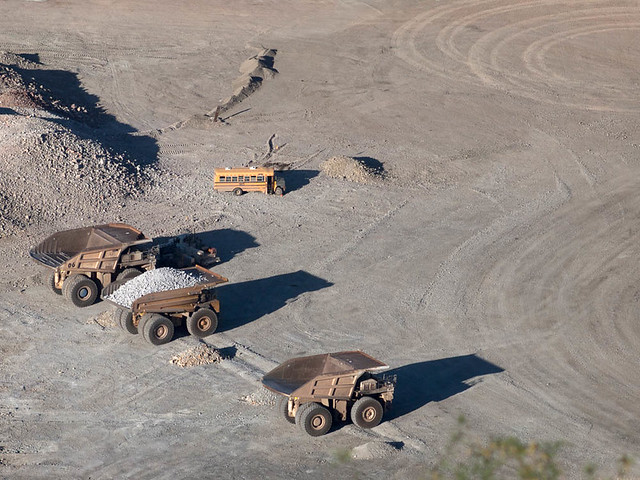
When everything comes down on us, we know that we will die alone with only our memories of the good and the bad and the love that we found in this harsh world. Life is for the living and everything continues on after we are gone. The Ray mine will survive as a landmark of our existence as a species long past the death of the last living human on earth.
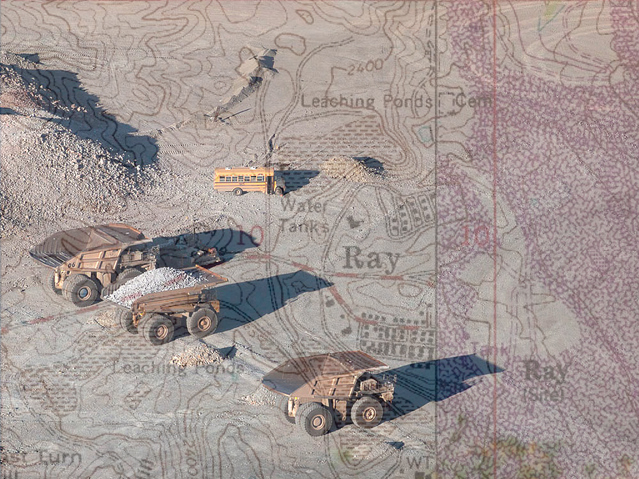
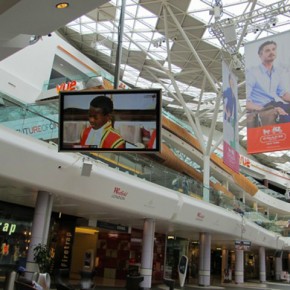
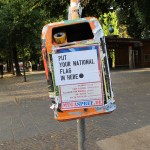

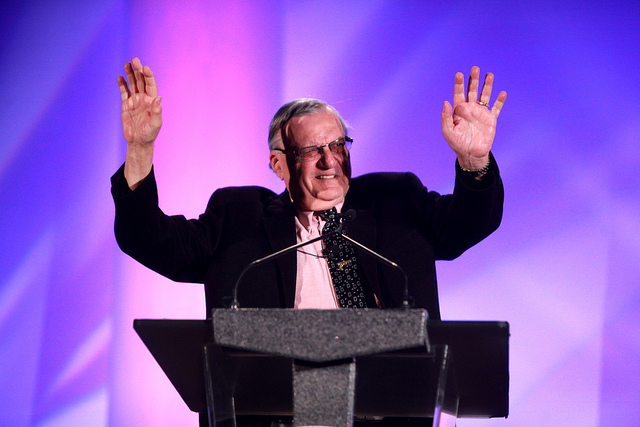

Open-pit mining is the safest mining method. To include words like: “It is easy to identify with the plight of the trapped miners. We can relate to being buried alive, buried by our very lives while knowing deep inside that we have no savior or rescuers. People followed the media coverage of the 2010 Chilean mining accident as if it were a religious experience.” when casting stones (so to speak) at a surface mine only shows the liberal left-wing views of a wacko-environmentalist. Get real. The US needs the minerals mined by open pit of underground methods. We can not survive without those minerals. I for one do not want to live in the stone age (again, so to speak. LOL!)
there is not one grade in k through 12 that discusses the real world of mining or minerals and 9 of 10 people in this world disdain any type of disturbance, including most congressmen. it’s too bad there is no oversight of the implementation of the 1970 Mining and Mineral Policy Act. i.e., there is suppose to be an annual report filed by the Secretary of the Interior on the implementation of this act—but not one report has ever been submitted to congress. Fie on them!!
All forms of mining are desecrations unto the Gaia Earth. Anyone who uses the products of mining is to be despised, except for the select few elite among us who can help guide us from the environmental abyss that we now face. Among those elite are Al Gore, Ed Abby, and Dave Foreman. I’m greatful now to find that Mark Hahn is joining those eliete that will lead us from the darkness of our proletariat ways into the enlightened communitarian community of sharing. Mr. Hahn clearly needs to use all of the dwindling resources that he may deem necessary in his quest to show us the one true WAY to environmetnal salvation. We should all be enthusiastically willing to move into yurts and arcologies in cities to save the planet. The wildlands project, not mentioned by the great Mr. Hahn, is another way that the depreadations of mankind since the pliestoscene can be reversed, allowing the return of sabertooth cats to roam from northern Mexico to the Yukon. Thank you for speaking the truth to pouer!
I didn’t write this article with an anti-modernist or “liberal left-wing wacko-environmentalist†agenda, but simply tried to present commentary on what I saw and what is known. I also wasn’t trying to “casting stones†at mining in general, but attempted to discuss some of the complex aesthetic, environmental and labor issues surrounding it and relate these to life in general. When you look into the abyss of the Ray Mine I think it is hard not to be moved by the enormity of it and reflect on larger human issues.
Thanks for reading!
Over all this type of mining is a enviroment disaster or slow moving train wreck that will curse this area for a long time. It is truly unfortunate and sad that the people that live and work in the area around this mine can’t see the damage to themselves or the enviroment of the area. This mine was started long before any of the newer methods of mining where the landscape is restored to a certain degree after the minerals are removed. So when this mine is mined out it will be eye sore for a long long time. and cause eniromental problems for a long long time too. – Michael
Question.
Not against or for mining, but a thought to really ponder, if not mining, where do we get the minerals / power that provide for the things we have today – the energy from coal, or the rare minerals used in the production of your PC, the servers that power the internet the world over or even your camera that took these great looking photos.
Its a fact that mines will be needed, and it would extremely unfair if all of these environmental impacts are exported to less developed countries for the sake of pure environmental conservation on ones own lands.
The better way around this is to ensure a safe and controlled mining environment and to encourage / mandate recycling to reduce our need for mining still more.
Mark, I came upon your site because I am looking for pictures and memories of my hometown to pass on to my children before no one remembers there was a Ray or Sonora Arizona. If you didn’t live there most people don’t know it existed even now. Pleasse go to the Ray, Sonora, Barcelona facebook site. You will be surprised and saddened that most of us have only the best of memories. To us it was almost a shangrala, probably because we can’t go back. It might put a different light on it and it might help you make sense of something you are trying to find while looking down in that pit. My father was a mine engineer and superintendent until 1976. I think most of us would tell you it was the best of times.
Thank you Deborah! I have been spending more time in the area talking with residents and have been hearing much more about the history of the area. If it wasn’t clear, when I ask, “Did they watch their own houses and the streets where they played as children tumble into nothingness and feel a sense of loss, or were they just happy to have a job and be able to feed their families?” I meant to encompass the joy that existed in these towns before they were gone.
You might be interested in a piece I just did on neighboring Hayden AZ:
http://markhahnphotography.wordpress.com/2012/12/12/hayden-arizona-all-american-mining-town/
Best wishes!